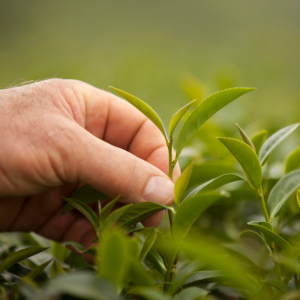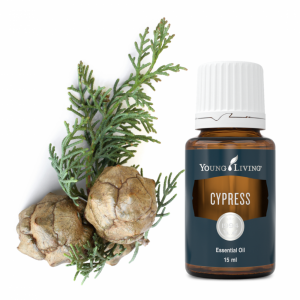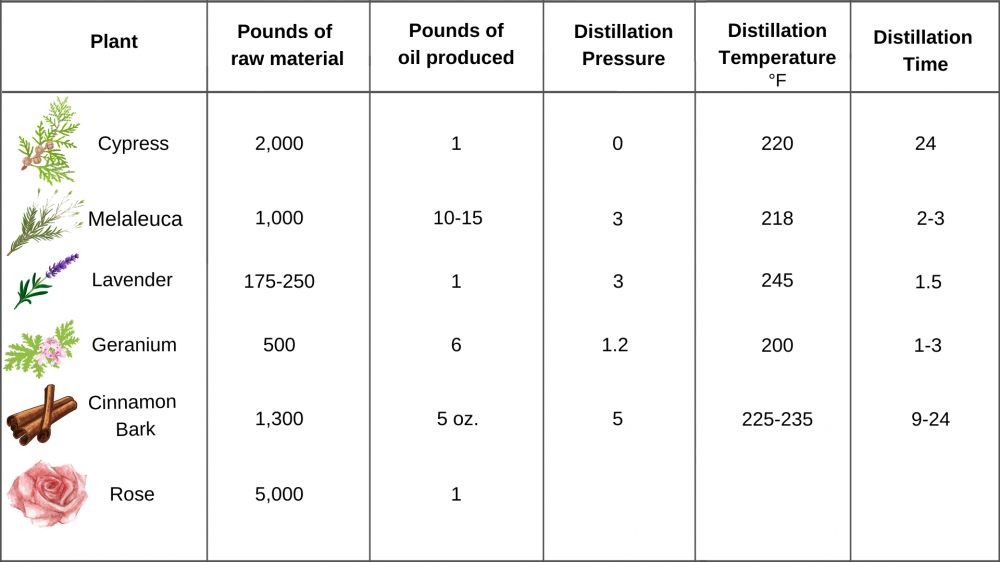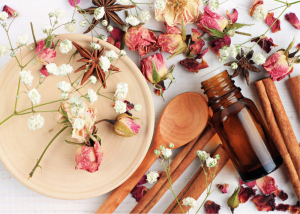What sets Young Living Apart?
21.09.2020
I’ve had the joy of knowing Nancy Sanderson for many years. She is Gary Young’s sister, and has always been passionate about Gary’s quest for excellence in essential oils.
I subscribe to Nancy’s newsletter, and yesterday I received a newsletter from her about what it means to create a therapeutic-grade essential oil, and why this is important.
It was a wonderful reminder for me of the different things that make Young Living’s oils stand out from other suppliers, and why I’ve always felt the difference (energetically and physically) when I use the Young Living oils and oil-infused products.
I’ve taken some of the information from Nancy’s bulletin and added my own words to it. I’m sure you will find it fascinating and informative. Enjoy the read!
Nature’s Magic
 Essential oils are made up of hundreds if not thousands of chemical constituents, in perfect balance. This is nature’s magic, and her special gift to us.
Essential oils are made up of hundreds if not thousands of chemical constituents, in perfect balance. This is nature’s magic, and her special gift to us.
Yet not all essential oils are created equal. As demand for essential oils grows around the globe, it becomes more and more vital that you know and trust the processes of your essential oil supplier.
Why? Because a supplier stands to make a lot of extra profit if they can pass a fake essential oil off as a real one, or if they can adulterate their essential oil by adding virtually undetectable synthetic components to it. I say “virtually” here, because you need very high end equipment to detect these adulterants.
Fortunately, every batch of Young Living oil is run through 90 of these tests, so we do have an absolute guarantee that our essential oils are pure and unadulterated. But most essential oil companies don’t have that.
And it’s not only adulteration that causes an oil to be a lower quality, and a supplier to have a higher profit margin.
- the part(s) of the plant from which the oils was produced
- the condition of the soil
- the fertilizer used (organic or chemical)
- the geographical region
- climate
- altitude
- harvesting methods, and
- distillation processes.
For example, common thyme (Thymus Vulgaris) produces several different chemotypes (biochemically unique variants within one species), depending on the conditions of its growth, climate, and altitude.
Chemotypes are biochemically unique variants within a species, which have a significant impact on how that oil works on the body.
I liken this to dogs. All dogs are the same species, ie. Canis lupus. Yet within that species, we have many different breeds, each one with their own distinct personality traits. Depending on your family’s needs, there will be breeds that are perfect for you, and other breeds that aren’t the right fit.
One chemotype of Thyme produces an essential oil with high levels of a natural plant chemical called “thymol”, depending on the time of year it is distilled. The later it is distilled in the growing season, the more thymol the oil will contain. Research online to find out the benefits of thymol! You’ll understand why you want your essential oil of Thyme to be as high as possible in this constituent.
The Art of Distillation
The key to producing a therapeutic-grade essential oil is to preserve as many of the delicate aromatic compounds within the essential oil as possible. These aromatic chemicals are easily destroyed by high temperature and pressure. They are also destroyed through contact with chemically reactive metals such as copper or aluminium, which some companies use in their essential oil distillers.
This is why all therapeutic-grade essential oils should be distilled in stainless steel cooking chambers at a low pressure and low temperature.
Distilling an essential oil is a work of art, not just a job. The operator of the distiller must have a full understanding of the value of the oil in order to produce the highest quality of oil.
Oils that are subjected to high heat and pressure in their distillation process have a distinctly simpler and inferior profile of natural chemical constituents, because the excessive heat and temperature fractures and breaks down many of the delicate aromatic compounds within the oil. When that happens, you no longer have a therapeutic-grade essential oil.
Also the length of time in distilling is very crucial. For example, Young Living distills their Cypress essential oil for 24 hours, where other suppliers distill for 2 and a quarter hours.
One of the key costs in distilling essential oils is the cost of running the boiler to create the steam. Running a boiler for 24 hours is a lot more costly than running a boiler for 2 and a quarter hours….and that helps explains why Young Living’s Cypress oil may cost a little more than other brands.
If you are buying Cypress essential oil, how will you know how long it’s been distilled for? The short answer is, “You don’t”.
 But you will notice a vast difference in the efficacy of the two oils. The Cypress that has been distilled for 24 hours has a complete (whole) fingerprint of compounds in it, so naturally its potency and efficacy will match what’s in nature. There are 280 constituents in whole cypress oil, and all 280 make their way into the bottle.
But you will notice a vast difference in the efficacy of the two oils. The Cypress that has been distilled for 24 hours has a complete (whole) fingerprint of compounds in it, so naturally its potency and efficacy will match what’s in nature. There are 280 constituents in whole cypress oil, and all 280 make their way into the bottle.
The one that has been distilled for the industry standard of 2 and a quarter hours simply won’t compare. It might still be an organic oil. It might have still been produced with low pressure and low temperature steam distillation, so it can still be called “therapeutic-grade”…but it hasn’t been distilled for long enough to capture the entire fingerprint of natural chemicals that make up the whole oil. In fact, only about 20 of the constituents will have made their way into the bottle.
This then creates an “unbalanced” essential oil.
Why is balance important?
Each natural chemical in the plant exerts its own effect. In nature, this essential oil has evolved so that the different constituents sit in perfect balance, each one counterbalancing the other. It’s like one of those human statues, where 12 people are all standing on top of each other to create an amazing shape. If you take out a couple of these people, the whole shape needs to change in order to accommodate the missing people. It no longer looks the same.
Essential oils are no different. As soon as you knock out some of the constituents, your essential oil might still smell beautiful because it still has many of those lovely aromatic compounds, but it simply doesn’t have the balance and efficacy of a truly whole essential oil like the ones produced by Young Living.
That means you either don’t get the same level of potency and efficacy…or you may even create problems for the body with an unbalanced essential oil, because those constituents are no longer being counterbalanced correctly.
Which Cypress oil would you rather invest in? I know my answer!
And of course the plant material should be free of herbicides and other chemicals. These can react with the essential oil during distillation to produce toxic compounds. Because many pesticides are oil-soluble, they can also mix into the essential oil. That’s why part of Young Living’s Seed to Seal promise is that no chemicals are used at any time during the growing, production and bottling process, ie. from seed to seal.
If you want to check this out for yourself you can volunteer on one of Young Living’s farms, and have the amazing experience of participating in the hand-weeding, harvesting and distillation program. I love that Young Living’s culture is based around these farm experiences. We WANT you to know and feel the heart that goes into every bottle of Young Living oil.
So let’s now explore essential oil production. Here are some great facts to consider:
Distillation Facts and Figures
No two plants are the same. Each one has its own unique needs from the composition of the soil, to the amount of rain and nutrients, to what time of year or season it’s harvested, to the temperature, pressure and length of time it’s distilled. For example:

What does Seed to Seal mean?

Seed to Seal – IT’S NOT JUST A SLOGAN IT’S OUR CALLING!!
Here’s how to order….
 If you already have your own wholesale account with Young Living, you can order through the shopping cart on your virtual office, or via phone or live chat with your local Young Living office.
If you already have your own wholesale account with Young Living, you can order through the shopping cart on your virtual office, or via phone or live chat with your local Young Living office.
If you’re not already receiving our weekly
Raw Divinity bulletin, CLICK HERE to subscribe
